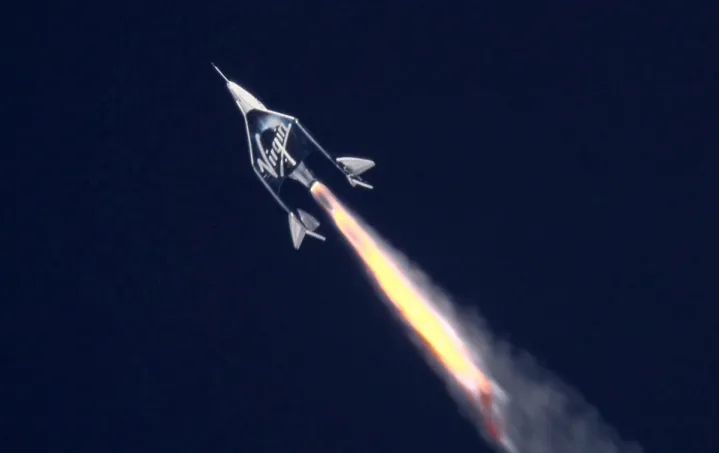
Virgin Galactic has announced plans for its first private tourism flight to the edge of space.
The flight window for the Galactic 02 mission opens on Thursday, August 10, and the mission will be live-streamed by the company.
It’ll carry its first three paying civilians on a rocket-powered plane to a point around eight times higher than a cruising passenger plane where they’ll enjoy a few moments of weightlessness and the kind of stunning views of Earth that are usually the preserve of astronauts. Taking off and landing at Spaceport America in New Mexico, the entire experience will last around 70 minutes.
Details of the Galactic 02 flight manifest, including the names of the crew and pilots, will be released nearer the flight date, the company said.
The mission follows last month’s maiden commercial flight involving two Italian Air Force pilots and an official from the National Research Council of Italy.
Customers will fly aboard VSS Unity, which is carried to an altitude of about 50,000 feet by another aircraft, VMS Eve. Eve then releases Unity, which immediately fires up its rocket engine, sending it to a peak altitude of about 282,000 feet (53.4 miles/86 km), about 9 miles short of the Kármán line, which is widely regarded as the point where space starts.
Virgin Galactic will be keen to start offering regular rides to the hundreds of people who’ve already handed over big bucks for the trip of a lifetime. It started selling seats years ago for $250,000 per person, though in 2021 it increased the price to an eye-watering $450,000.
After lagging behind space tourism rival Blue Origin in the race to launch a commercial service, Virgin Galactic now looks to be on a roll. Blue Origin had to suspend its service last year after its suborbital rocket exploded during an uncrewed flight in West Texas. The empty crew capsule ejected and landed without incident, proving the effectiveness of the vehicle’s safety procedure. Blue Origin hopes to resume crewed flights in the coming months.
Critics say such tourism services cause unnecessary pollution and are ultimately a playground for the super-rich. Supporters, however, claim that commercial flights offer microgravity research opportunities to more organizations and businesses while also serving to inspire young engineers. The services also open up the dream of space (or near-space) travel to a new generation of adventurers, albeit ones with deep pockets.
Editors' Recommendations
- U.S. spacecraft lands on the moon for the first time in over 50 years
- See how Blue Origin’s rocket did in first flight since 2022 explosion
- Virgin Galactic to lose funding from its billionaire founder
- Measure twice, laser once. Meet the scientists prodding NASA’s first asteroid sample
- NASA’s amazing Mars helicopter just set a new flight record


